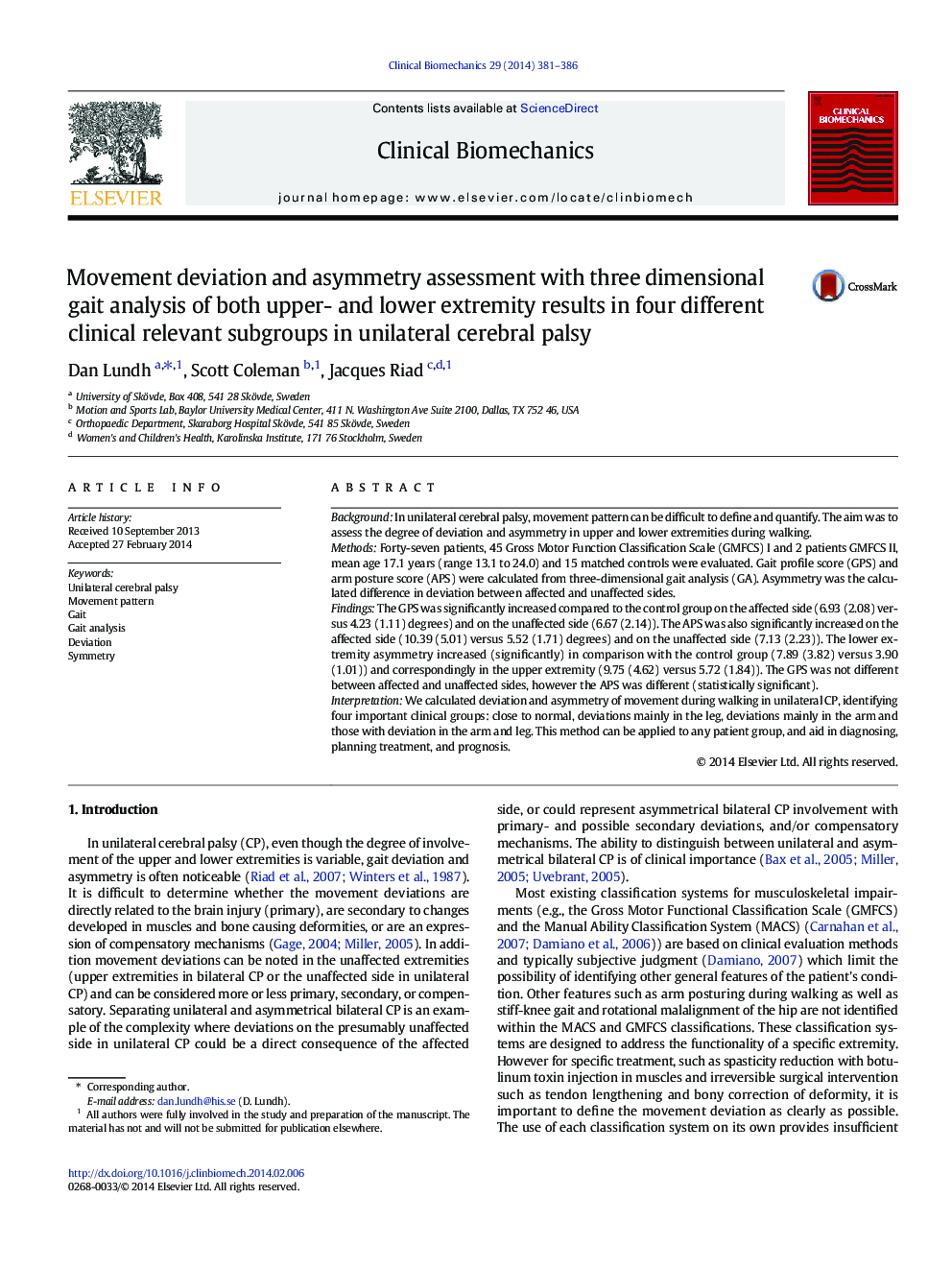| Article ID | Journal | Published Year | Pages | File Type |
|---|---|---|---|---|
| 6204841 | Clinical Biomechanics | 2014 | 6 Pages |
BackgroundIn unilateral cerebral palsy, movement pattern can be difficult to define and quantify. The aim was to assess the degree of deviation and asymmetry in upper and lower extremities during walking.MethodsForty-seven patients, 45 Gross Motor Function Classification Scale (GMFCS) I and 2 patients GMFCS II, mean age 17.1 years (range 13.1 to 24.0) and 15 matched controls were evaluated. Gait profile score (GPS) and arm posture score (APS) were calculated from three-dimensional gait analysis (GA). Asymmetry was the calculated difference in deviation between affected and unaffected sides.FindingsThe GPS was significantly increased compared to the control group on the affected side (6.93 (2.08) versus 4.23 (1.11) degrees) and on the unaffected side (6.67 (2.14)). The APS was also significantly increased on the affected side (10.39 (5.01) versus 5.52 (1.71) degrees) and on the unaffected side (7.13 (2.23)). The lower extremity asymmetry increased (significantly) in comparison with the control group (7.89 (3.82) versus 3.90 (1.01)) and correspondingly in the upper extremity (9.75 (4.62) versus 5.72 (1.84)). The GPS was not different between affected and unaffected sides, however the APS was different (statistically significant).InterpretationWe calculated deviation and asymmetry of movement during walking in unilateral CP, identifying four important clinical groups: close to normal, deviations mainly in the leg, deviations mainly in the arm and those with deviation in the arm and leg. This method can be applied to any patient group, and aid in diagnosing, planning treatment, and prognosis.
